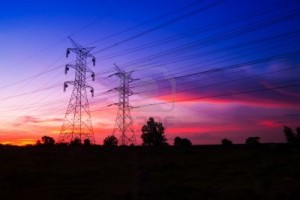7 Tips for Church Electrical Safety
November 8, 2012 - 4 minutes read In church facilities, safe practices in the use of electricity are particularly important given the number of people gathering in the building, and the various pieces of electrical equipment that get regularly used in many congregations. While most of us have grown up with electricity ‘on tap’ and probably do not give it a great deal of thought, it’s important to be aware that it can be a dangerous resource if improperly used – with the potential for burns, shocks, fires, and even deaths.
In church facilities, safe practices in the use of electricity are particularly important given the number of people gathering in the building, and the various pieces of electrical equipment that get regularly used in many congregations. While most of us have grown up with electricity ‘on tap’ and probably do not give it a great deal of thought, it’s important to be aware that it can be a dangerous resource if improperly used – with the potential for burns, shocks, fires, and even deaths.
The risk for accidents or fires may be higher in some older buildings that have wiring and electrical systems not designed for the demands of modern technology. However, no matter the age of your church facilities, safety procedures should be followed at all times in the use of electricity and electronic equipment. This includes conducting regular (at least monthly) internal checks, as well as intermittent safety inspections by a professional electrical tradesperson.
Some safety tips:
- Extension cords should be used to provide a temporary solution only, and not utilised on a long-term basis. Cords should also never be strung together, placed under carpets, across walking areas, or trapped by furniture, and they should not be used for large pieces of equipment such as refrigerators or vacuum cleaners. Cords that are frayed, worn, permanently kinked or hot to touch should be discarded. In addition, if too many extension cords are being used, you should look into installing additional power outlets.
- Power outlets should be cool to touch, securely fixed, and silent. Outlets that make a buzzing sound or that are loose should not be used.
- Wiring – as mentioned above older facilities in particular may have electrical systems not up to modern equipment, resulting in overloaded circuits, arcing, equipment damage and the potential for fires. If your church’s wiring is old, worn or causing problems, call in the professionals for a thorough electrical inspection.
- Power boards – if you need to use these devices, make sure not to overload them with too many pieces of equipment, and never plug double adapters into them. If power boards overheat, disconnect immediately.
- Adapters – like extension cords and power boards, adapters should be used as a temporary solution only. In addition, they should never be ‘piggy-backed’ by placing one into another – a very risky practice.
- Safety switches should be installed in fuse boxes, but if they keep tripping the problem should be investigated as it may indicate overloaded circuits.
- Arc Fault Detection Devices circuit breakers should be considered to minimise the fire-risk. These devices are designed to detect potential electrical fire hazards and shut-off the power.
In addition, all electrical equipment and appliances should be kept clean and dust-free, dry and protected from moisture, and cool to help prevent excessive build-up of heat. These preventative measures should help to not only reduce the risk of fire, but also extend the working life of electronic equipment.
Written by Tess Oliver
Tags: asset protection, Electricity, fire
Recent Comments